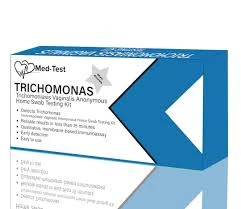
Déc . 11, 2024 00:54 Back to list
Understanding Histomoniasis in Poultry and Its Impact on Avian Health and Production
Histomoniasis Understanding the Threat to Poultry and Game Birds
Histomoniasis, a disease primarily affecting poultry, especially turkeys and game birds, is caused by the protozoan parasite Histomonas meleagridis. This pathogen has gained attention in the poultry industry due to its potential to cause significant economic losses and its complex relationship with other parasites, particularly the cecal worm (Heterakis gallinarum). Understanding the biology, transmission, symptoms, and control methods for histomoniasis is crucial for poultry producers and avian veterinarians alike.
Pathophysiology and Life Cycle
Histomonas meleagridis is an anaerobic protozoan that primarily infects the ceca (the large intestine) of birds. The life cycle of H. meleagridis involves two hosts. The first host is the infected bird, often a turkey, where the parasite multiplies. The second host is the cecal worm, which serves as a vector for the parasite. Birds become infected by ingesting the eggs of Heterakis gallinarum, which contain the Histomonas cysts. Once inside the bird’s intestinal tract, the cysts release the parasites, leading to infection and subsequent disease.
Clinical Symptoms
Histomoniasis manifests through a range of clinical symptoms. Infected birds may exhibit lethargy, a decrease in feed and water consumption, and a characteristic yellow-green diarrhea. In turkeys, the disease can escalate quickly, leading to sudden death, often without prior clinical signs. Chronic infections in adult birds may result in poor weight gain and decreased egg production. In severe cases, lesions can develop in the liver and ceca, leading to necrotic foci and eventual death.
Transmission and Risk Factors
Transmission of histomoniasis is primarily fecal-oral; the presence of the cecal worm in the environment significantly increases the risk of transmission
. The disease can often spread in mixed-species flocks, which is common in backyard poultry settings where different bird species are kept together. Factors that contribute to outbreaks include overcrowding, poor sanitation, and stress from environmental changes, such as extreme weather conditions or vaccination procedures.histomoniasis

Diagnosis
Diagnosis of histomoniasis can be challenging. Avian veterinarians often rely on clinical signs, history of exposure to infected birds, and necropsy findings. During necropsy, characteristic lesions can be observed, including necrotic liver lesions and prominent ceca, which may have yellowish, foul-smelling contents. Laboratory methods, such as fecal examinations and histopathological analysis, can confirm the presence of H. meleagridis.
Control and Management Strategies
Controlling histomoniasis involves a multifaceted approach, including biosecurity measures, management practices, and potential pharmaceutical interventions. Emphasizing good hygiene in poultry housing can significantly reduce the spread of the infection. Preventing cecal worm infestations through regular deworming and maintaining a clean environment is essential. Avoiding overcrowding and minimizing stress through proper management practices will also help in reducing susceptibility to the disease.
As for pharmaceuticals, there is no approved treatment specifically for histomoniasis in most countries. However, some medicated feeds may help control the cecal worm populations and reduce the incidence of histomoniasis indirectly. Research continues to explore vaccine development to confer immunity against H. meleagridis, though effective vaccines have yet to be established.
Conclusion
Histomoniasis represents a significant health concern in the poultry industry, necessitating awareness and proactive management strategies among poultry farmers and veterinarians. By understanding the disease's life cycle, symptoms, and transmission routes, effective control measures can be implemented to mitigate outbreaks. Continued research into vaccines and treatment options is crucial to protect poultry health and sustain the industry. Ensuring proper biosecurity and management practices can aid in safeguarding flocks against this insidious disease, thereby protecting the economic interests of poultry producers and the welfare of avian populations.
-
Premium Honeysuckle Products - Leading Honeysuckle Manufacturer & Supplier Factory
NewsJun.10,2025
-
Pulmonary Edema Solutions from Leading Manufacturer & Supplier Reliable Factory Price
NewsJun.10,2025
-
Red Eyes - Leading Red Eyes Manufacturer & Supplier, Premium Quality Factory Price
NewsJun.10,2025
-
Broiler Ascites Syndrome Solutions Top Manufacturers
NewsJun.10,2025
-
Premium Amoxicillin Suppliers Reliable Biomox Mexican Factories
NewsJun.10,2025
-
Top Brewing Cell Wall Solutions Optimized Efficiency
NewsJun.09,2025




